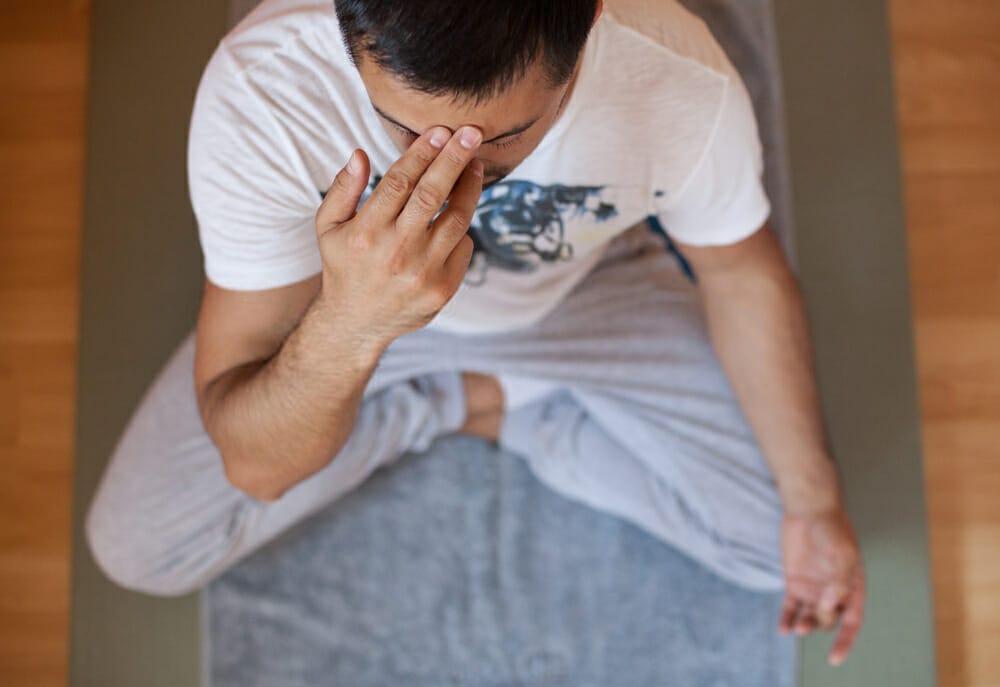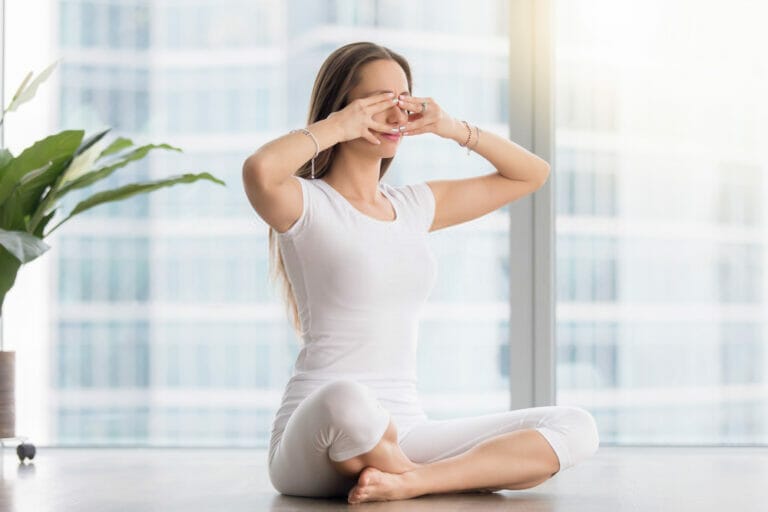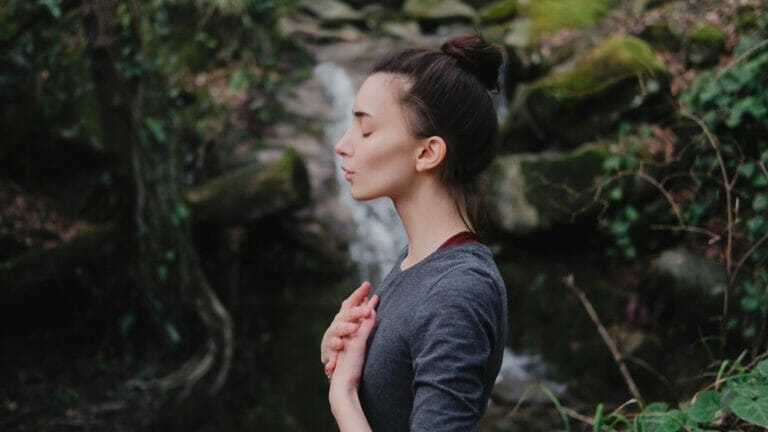How To Do Ujjayi Pranayama – Purpose, Techniques & Benefits
Ujjayi breath is powerful pranayama that is referenced in both Hatha Yoga Pradipika and Gherand Samhita.
This breathing technique is so effective that it energizes and soothes your mind and body at the same time, allowing you to change your Yoga practice.
When you are practising Ujjayi breath, the energy of the soul releases from your system.
Read on if you want to know more about ujjayi pranayama, as we will discuss what it means, techniques, benefits, and precautions about this breathing technique.
Ujjayi Definition
Ujjayi is a Sanskrit word that means a victorious warrior or victorious breath. Other words, such as ujjai and oojya, are derived from this term.
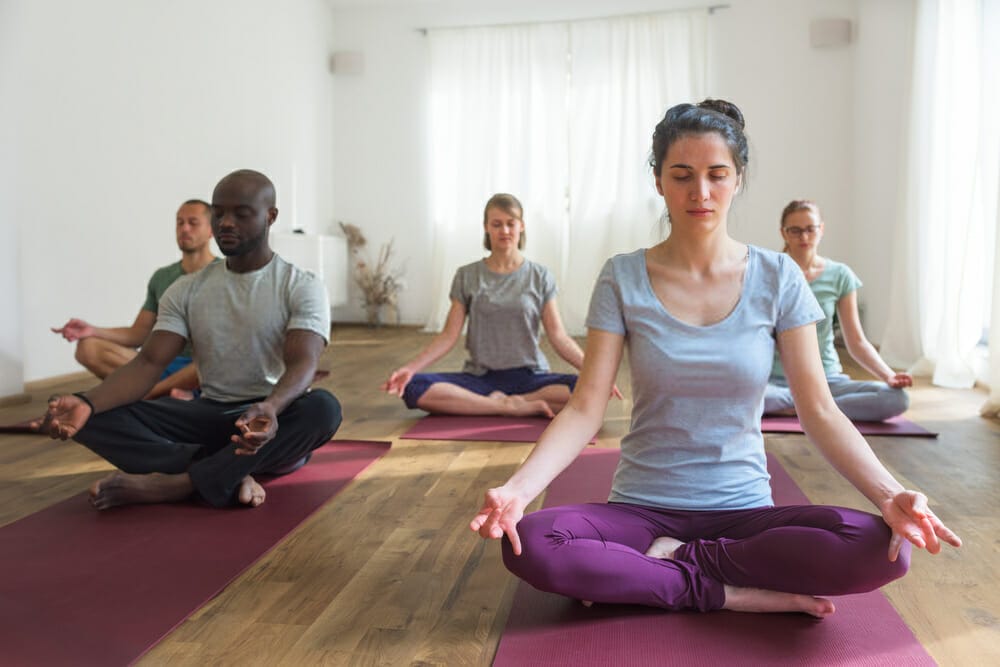
The breath is called ujjayi because it is like that sound produced by a victorious warrior as they breathe after winning the battle.
Ocean breath or hissing breath are two terms used to describe the pranayama. This pranayama seeks to keep the mind calm while keeping the body warm.
It is brilliantly portrayed in Hatha Yoga Pradipika as giving practitioners such great strength that they can erase decay and death. It means that by practising ujjayi breathing, one can defeat death.
Ujjayi Pranayama is a breathing technique that uses the diaphragm and glottis to produce sound. You can do this pranayama in both standing and seated yoga poses, and it is one of the best breathing techniques for beginners.
This Pranayama is similar to "breath of fire" pranayama practised in western cultures where the abdomen is sucked in with effort. This kind of breathing can create a small vacuum in the lower abdominal region.
As a result, it can increase skin temperature through vasodilation, which increases local blood flow to the skin.
Additionally, when you are practising ujjayi pranayama, your mind becomes calmer because it has less tension.
Purpose of doing ujjayi pranayama
You can practice Ujjayi breath to keep calm, and it helps you relax your mind and body. It is because breathing exercises increase blood flow throughout the body, which involves many parts of the nervous system.
When you are practising this pranayama, the diaphragm and the major muscles of the abdominal wall contract and relax, it causes displacement of air in their cavities and makes the ujjayi sound. Your breath is smooth and regular when you are do ujjayi breathing accurately.
You can maintain concentration on your breath for a long time, which puts you in the optimal state for meditation.
How to get the ujjayi sound
In this breathing technique, the sound is called ujjayi, which results from the opening and closing of the glottis.
The ujjayi sound comes from the start and closing of the glottis while contracting and relaxing the major muscles of the abdominal wall.
To make this sound, follow these steps.
- Raise your hand at the front of your face, palm towards your mouth, and take a deep breath through your mouth. Feel the air escaping your mouth and landing on the palm of your hand.
- Pull your chin down to slightly contract your throat. As you try to steam up a mirror in front of you, open your mouth and breathe out slowly. Exhaling ujjayi makes it sound like continuous ocean waves are nearing the shore.
- Similarly, breathe through your lips while gradually tightening the back of the throat. A calming air will move from your throat to the opening of your mouth. Inhaling ujjayi produces a sound similar to that created when you cup a seashell over your ear.
How to do ujjayi
Let’s look at the steps required to perform ujjayi.
Sit comfortably
Sit in any of the meditation positions that feel comfortable to you. For example, sitting in Sukhasana (comfortable position) or padmasana (lotus pose) is preferable. You can also sit in a chair.
Relax your shoulders and lengthen your spine. To maintain correct balance, distribute your body weight evenly on both sitting bones.
Next, place both hands on the kneecap and seal your lips. It’s essential to concentrate on filling the lips since ujjayi breathing must pass through the nostrils.
Constrict the throat muscle
Feel the opening at the back of your throat by pressing your tongue on the roof of your mouth. This aperture, which is enclosed by neck muscles, is effectively a valve.
So first, constrict the muscles to keep the opening in the shape of a narrower hole. Then tweak your vocal muscles as you inhale to achieve the desired sound.
Incorporating abdomen and diaphragm
Engage your belly region once you’ve completed the ujjayi opening in your throat. Inhale slowly and deliberately, using your abdominal muscles and diaphragm. If done correctly, the abdomen should contract spontaneously and without effort (just like deep belly breathing).
Focus on the nostril inhale
Bring your attention to your nose as you inhale. Take a deeper breath than usual and direct it into the imagined hole in the back of your throat. Hold the breath for 2-3 seconds after the first intake.
Then, through your constricted neck, exhale the collected breath from your nose, making the sound 'HHHHHAAAA.'
Make a sound loud enough to be heard by the practitioner or someone close. Even though you will breathe via your nostrils, its passage should be more clearly felt towards the back of the throat while drawing in and out.
Repeat
One breath in and one breath out constitutes one Ujjayi cycle. Choose the number of cycles you want to do; most people find that 3-5 minutes is sufficient.
Ujjayi Pranayama Techniques
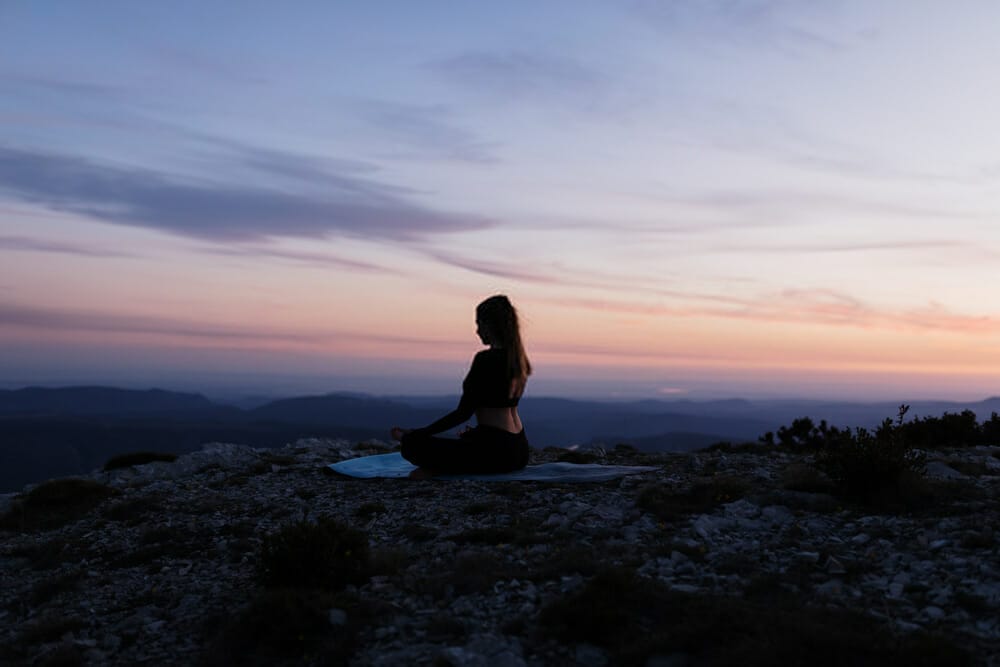
You can look forward to adding a few additional yoga aspects to improve the benefits once you’ve gained a suitable level of familiarity with the previous steps.
Ujjayi with Khechari Mudra
When you wish to improve Ujjayi Pranayama’s peacefulness and stress-relieving advantages, combine it with Khechari Mudra.
The khechari mudra is a basic mouth movement in which you fold your tongue forward and backwards such that the lower surface touches the upper palate. Then, extend the tip of your tongue back in your mouth without straining it.
Hold your tongue in this position and continue with the Ujjayi Pranayama instructions from before.
This method of performing Ujjayi activates various pressure points in the back of the mouth and nasal cavities. They affect the body by activating Prana and arousing Kundalini Shakti.
Ujjayi with Internal Retention
Ujjayi breathing with inner retention, or Antar Kumbhaka, generates more heat and provides pulmonary benefits. To put it simply, internal retention is the act of holding your breath.
Holding your breath improves respiratory efficiency by strengthening the chest wall muscles, increasing lung capacity, and increasing the alveolus involvement rate.
Follow the first three steps of Ujjayi breathing. Instead of holding your breath for 2-3 seconds in step 4, keep it for a long but comfortable period. For at least 10-15 seconds. Be friendly and slow as you exhale.
While holding your breath, make sure your belly is tucked in, your chest is stretched, and your shoulders are forced down rather than cringing.
Ujjayi with Bandhas
You can combine bandhas with Ujjayi Breathing if you’ve mastered Internal Retention. Body locks are included in the Bandhas, which produce concentrated pressure zones in your body.
You can do either the jalandhara bandha or both the jalandhara bandha and the moola bandha.
As you arrange your seating for the jalandhara Bandha, tilt your head down and press your chin towards the top of your breastbone, holding the lock. Then, carry on with the remaining Ujjayi breathing steps.
This lock will aid in the cleansing of your throat chakra, as well as increase the advantages to your throat muscles, vocal apparatuses, thyroid, and parathyroid glands.
Moola bandha cleanse the root chakra and naturally improve the flexibility, balance, and strength of the pelvic floor muscles. In addition, your hormones, bladder functioning, and bowel control will all benefit from this body lock.
As you prepare your seat for Ujjayi Pranayama, contract your perineum muscles upward and hold them in a lock before beginning the inhalation process. Don't hold this lock for too long at first; 5-10 seconds is enough.
As a general rule, once your perineum muscles begin to twitch due to the lock, relax them. You can also do both Moola Bandha and Jalandhara Bandha at the same time.
When to practice it?
You can do it at any time; however, the morning and evening are optimal for the practice. You should not perform this pranayama on a full stomach because it involves abdominal movement. It is best to eat a light meal or drink water before beginning.
The residue in your stomach can interfere with the proper execution of this breathing exercise.
Practice five rounds every session with a pause in between rounds daily. Begin with a 3 second inhale followed by 6-second retention. When practised regularly, gradually increase it by 1 second per week.
As you breathe in and out, visualize the life force energy flowing in and out of your body. Let the breath be smooth and soft.
Ujjayi Pranayama Benefits

Relaxes the muscles
Delaying your breath halts the urge to exhale, making it easier for you to relax all of your muscles.
Allowing your breath to enter and exit naturally through your nostrils is one of the simplest methods for achieving this relaxed state.
Protects the voice box
If you regularly practice Ujjayi, you will likely never need medical treatment or instruments that can damage or injure your vocal cords. Through the practice of Ujjayi, you can lower your voice and make it louder.
You will also be able to control your voice's pitch, resonance, and volume when you speak or sing.
Alleviates anxieties and stress
By keeping your breathing steady and slow during your practice, you can relax anxieties and stress naturally.
Your brain is equipped with a specific region dedicated to generating meditation-like feelings in response to breathing exercises like Ujjayi.
Promotes mental clarity and focus
Ujjayi Pranayama is excellent for achieving mental clarity. If you are unable to relax with your mind, Ujjayi breathing can help by quieting your thoughts.
It also improves the frequency of pulse waves emitted from the heart into the body with each heartbeat, which is instrumental for bringing about this state of focus.
Removes phlegm in the throat
Ujjayi Pranayama is also great for removing phlegm from the chest and throat. Phlegm can cause many irritating symptoms, including coughing fits, sore throats, and other inflammatory disorders that can damage your health.
Ujjayi breathing will help wash out any build-up in your throat by increasing blood flow into this area.
Helps in thyroid-related problems
Ujjayi breathing can improve the functioning of your thyroid gland. An under-functioning thyroid will cause feelings of fatigue, pain, and depression.
By making sure your thyroid works properly, you can reduce the likelihood of these symptoms occurring.
Ujjayi is excellent for patients with hypothyroidism because it encourages the flow of energy along the ida and Pingala nadis or energy channels.
Promotes sound sleep and cures the snoring problem.
Ujjayi Pranayama can cure snoring. It helps to remove any extra mucus in the throat, which may create a snoring problem.
Ujjayi Pranayama is also one of the best techniques to reduce stress for sound sleep.
Removes sinuses blockages
Ujjayi Pranayama can also help you cure chronic sinusitis, which generally causes allergies, fungal infections, and many other diseases. Ujjayi breathing can help drain the sinuses and get rid of the blockages.
Increases energy
By practising Ujjayi breathing, you can increase your energy levels while decreasing your fatigue during the day.
You can also obtain increased flexibility while exercising while practising Ujjayi breathing as it's an excellent way to increase circulation in all parts of your body.
Precautions
- One should avoid it during pregnancy.
- If you have significant cardiovascular problems, you should not practice it.
- You should avoid it if you have migraines or cardiac problems,
- You should not do it if your stomach is full. However, we always recommend doing ocean breath on an empty stomach because better outcomes are.
- If you’ve recently had surgery, stay away from this pranayama.
- It’s also worth noting that if you’re having trouble with Ujjayi breathing, it’s always ideal to do it with the help of an experienced teacher.
- Maintain the same breathing ratio for Exhalation and inhalation.
- Do not use a lot of force in your breathing.
Common mistakes
Tightening your throat is the most common mistake in Ocean Breath. However, only a slight constriction is required. You can also practice ujjayi with a straw to help you learn the technique.
Conclusion
In the past, ocean breath was the only breath most people knew about. It is no longer an exclusive technique. Most people now practice it as a regular breathing exercise they do every day.
Ujjayi has become one of the most popular breathing techniques in yoga today.
Ujjayi Pranayama can be a very relaxing breathing exercise for beginners to practice. It is because it requires little effort, and its calming effects are evident after practising it.
Usually, you would need a teacher to teach you the correct breathing technique.
However, if you cannot find a teacher, the internet is an excellent resource. There are many videos and websites which will help you learn Ujjayi Pranayama.
Ujjayi breathing is perfect for beginners and advanced practitioners of yoga. You can use it in all types of yoga and meditation.
In addition, it helps to increase the effectiveness of the other yogic techniques that we practice.
Let me know how you feel about doing Ocean breath. Like it? Hate it? Any other suggestions? Tell me in the comments!

